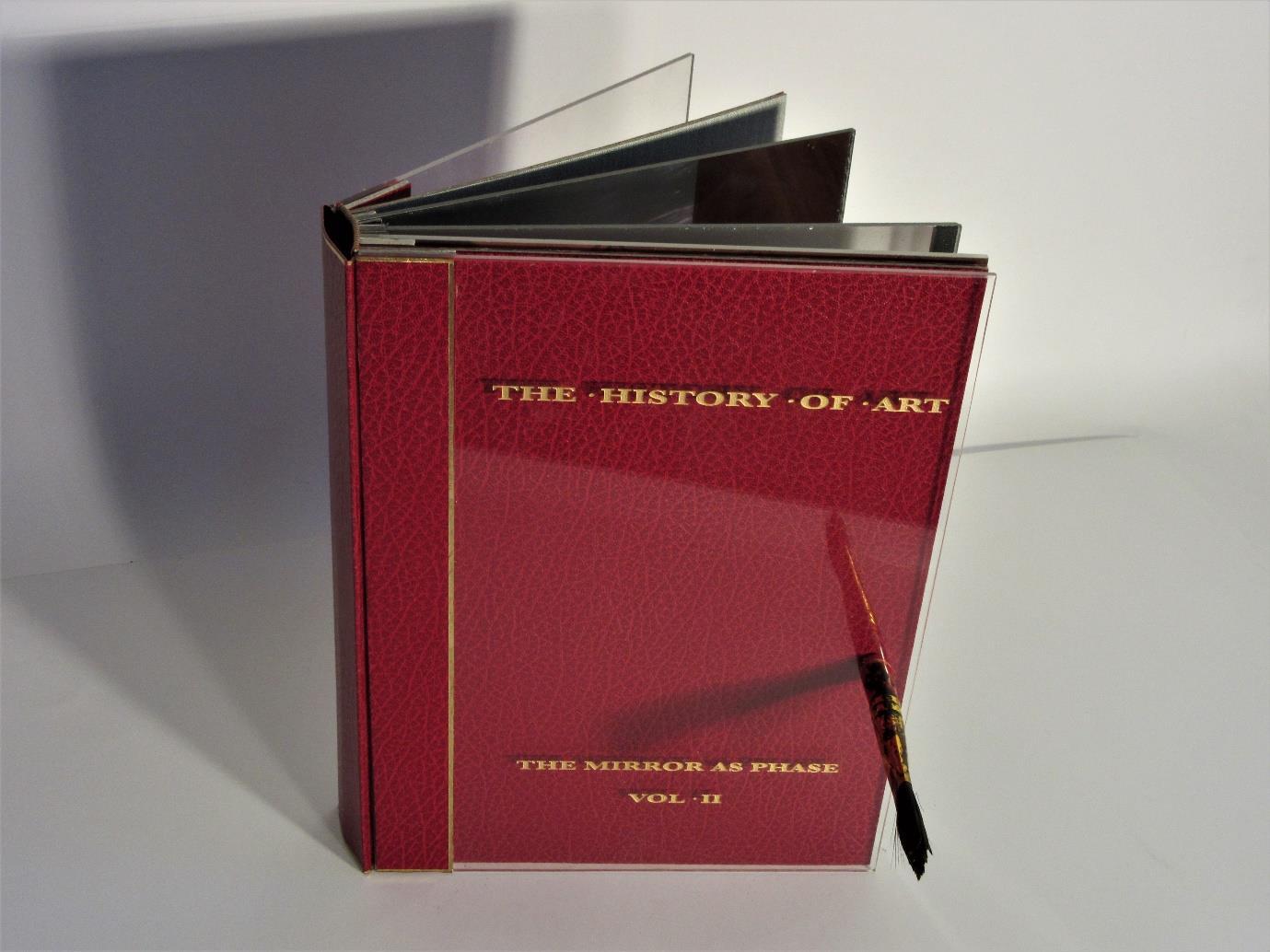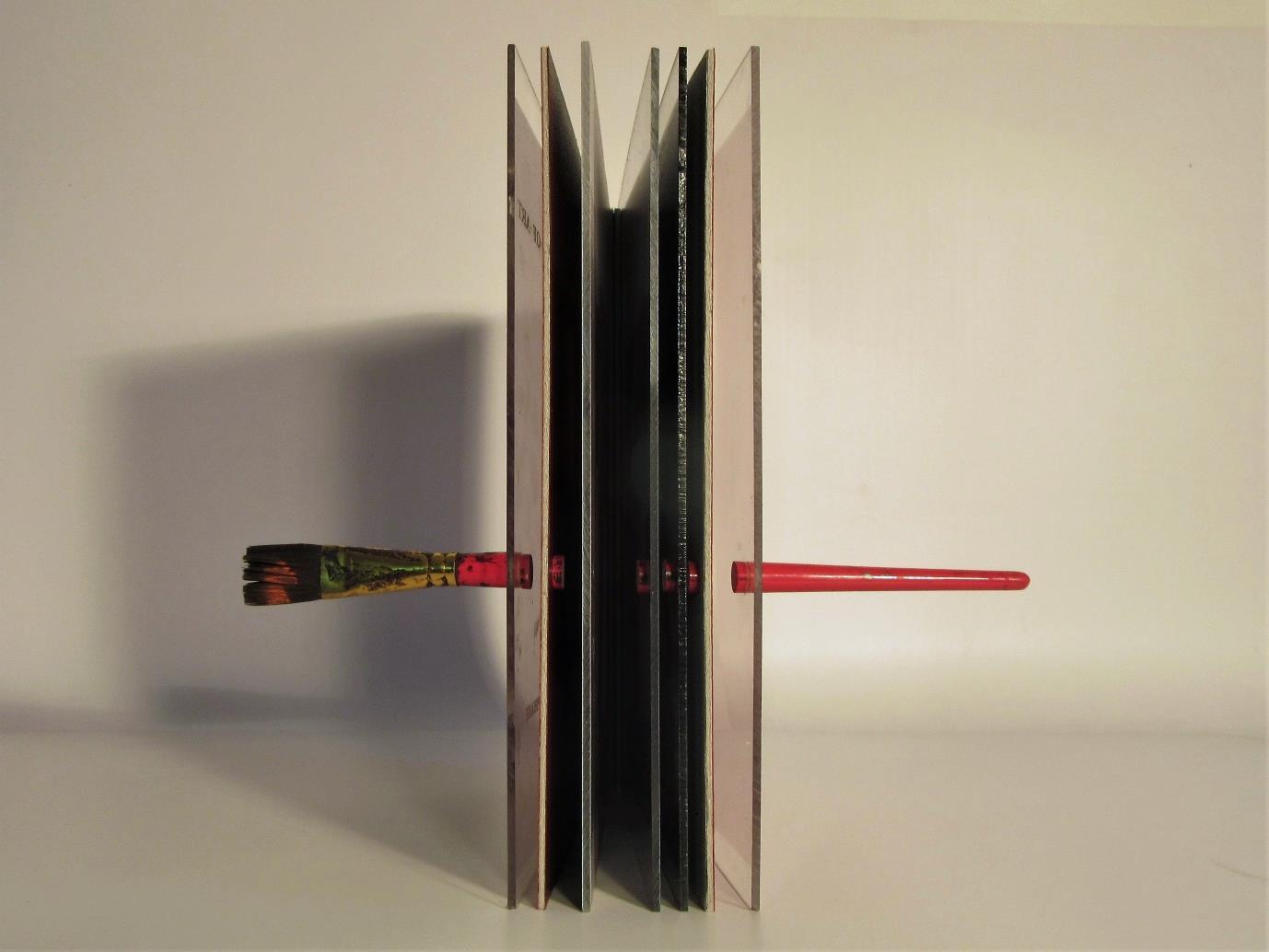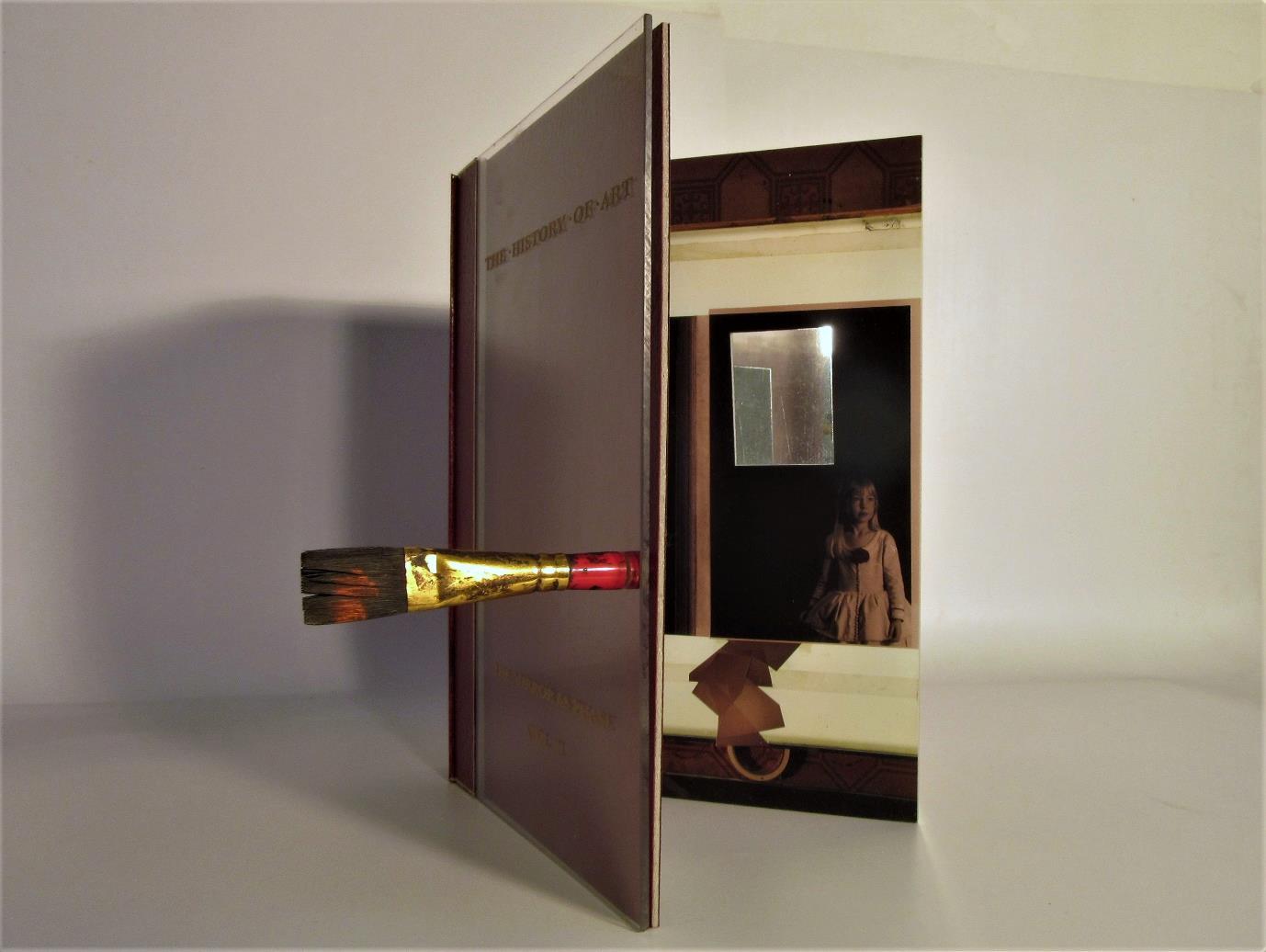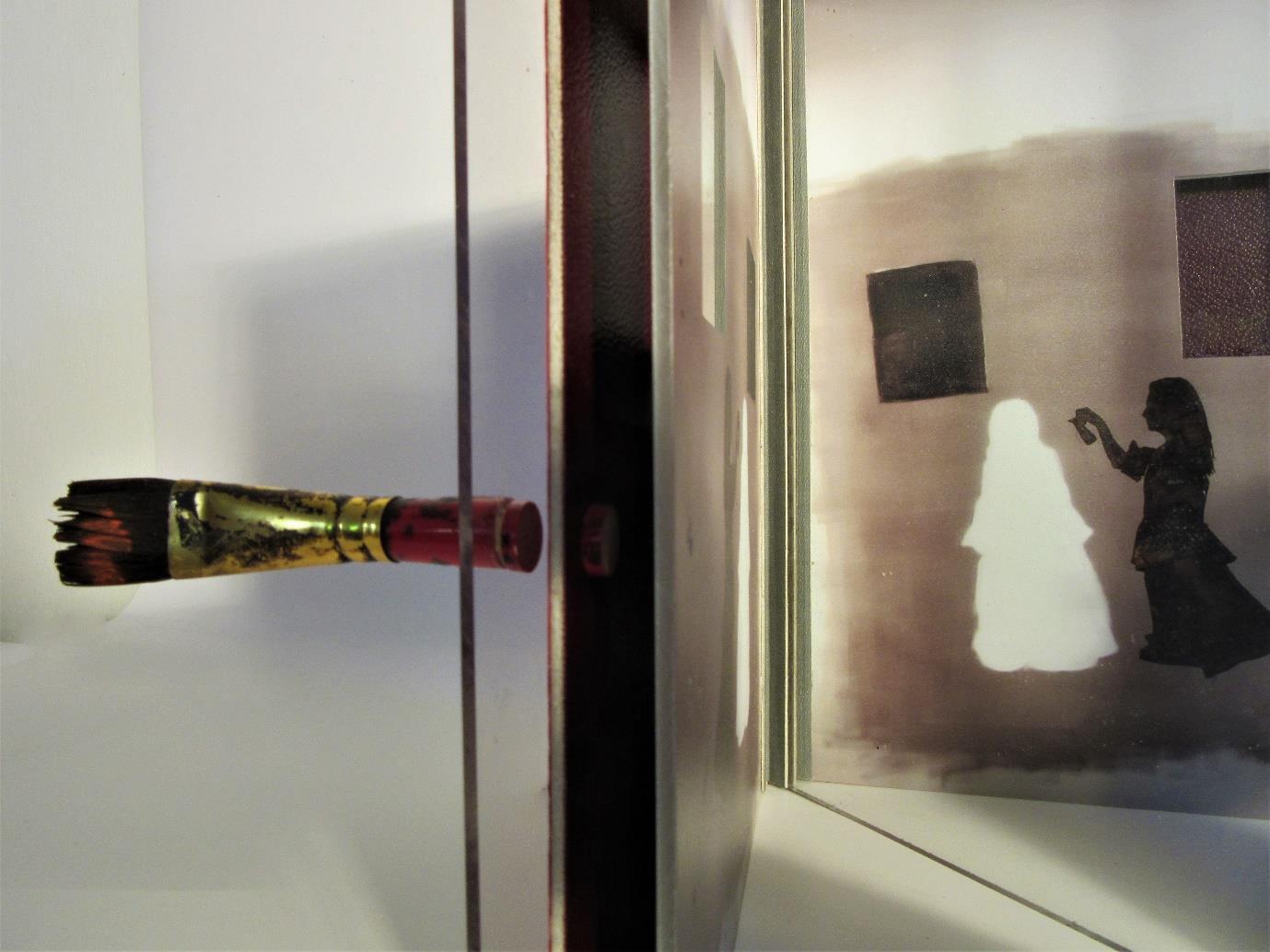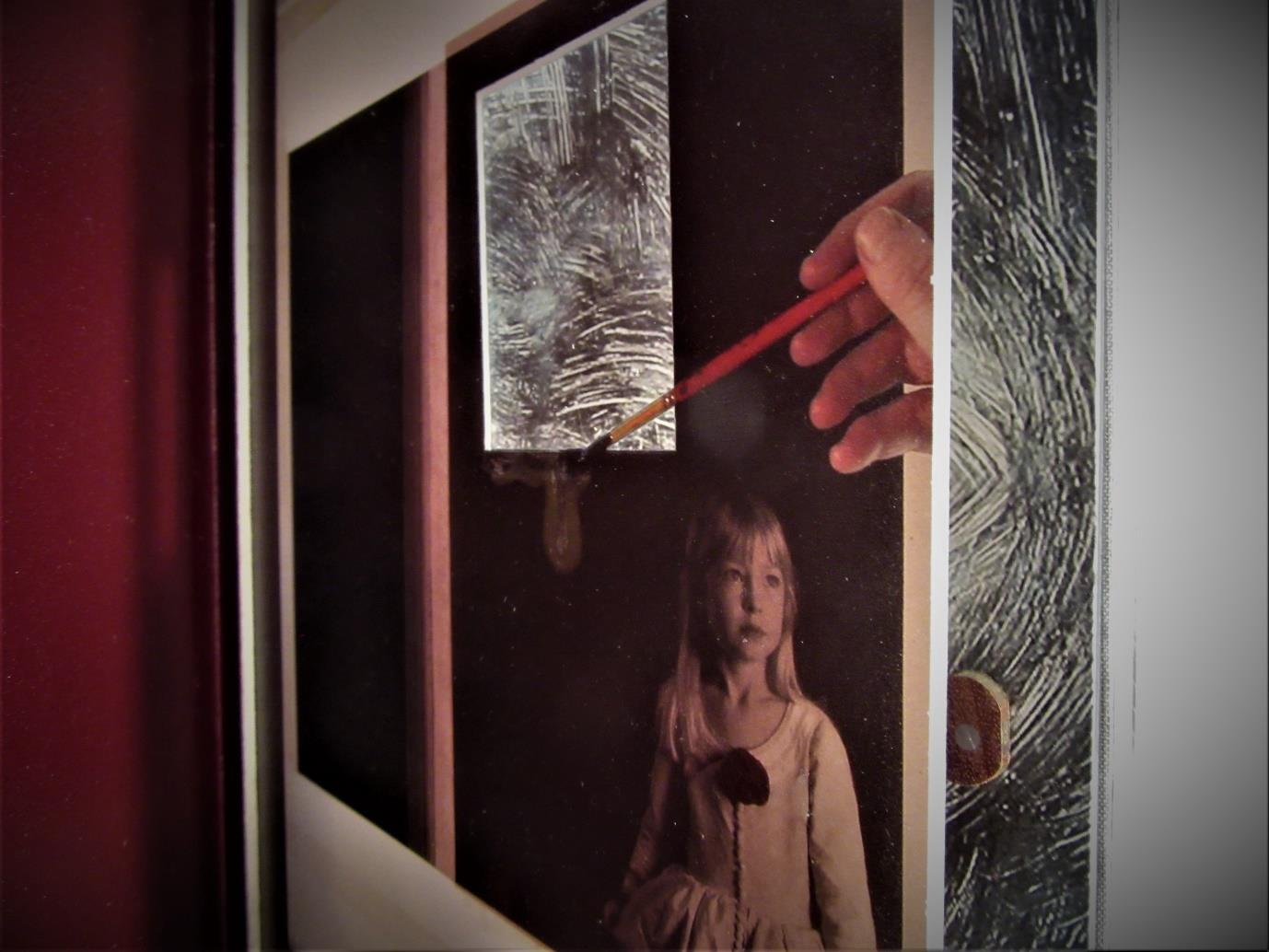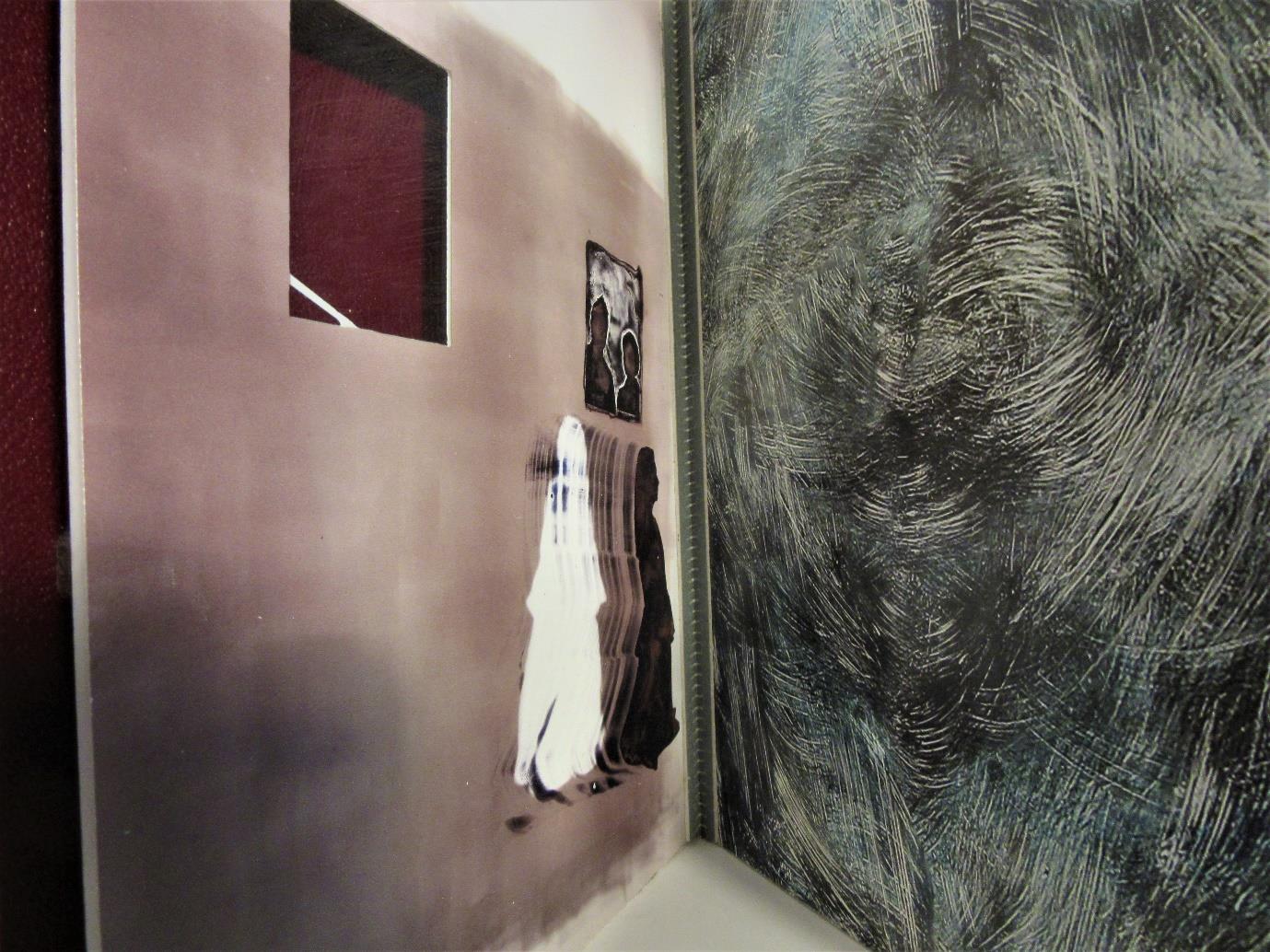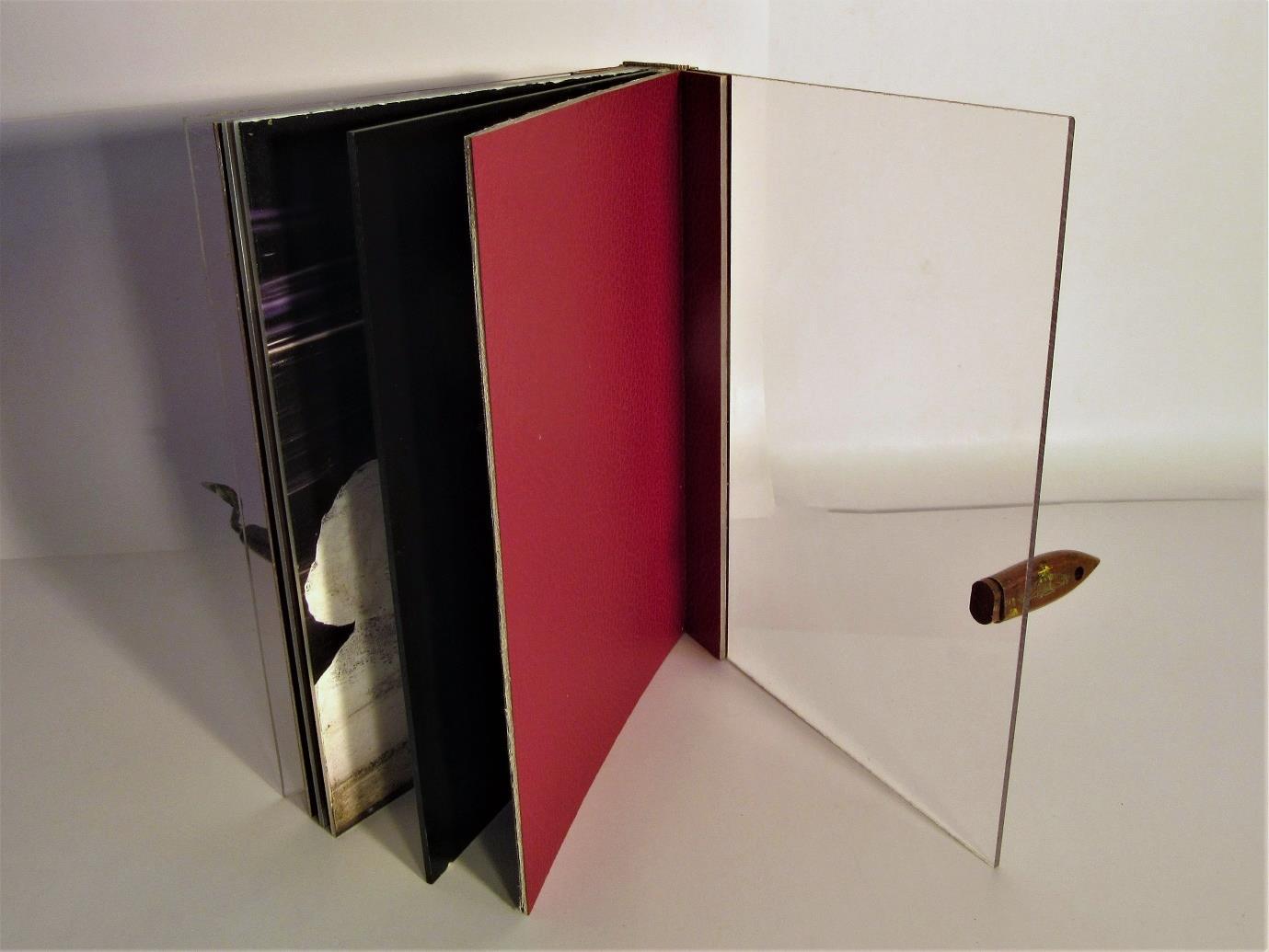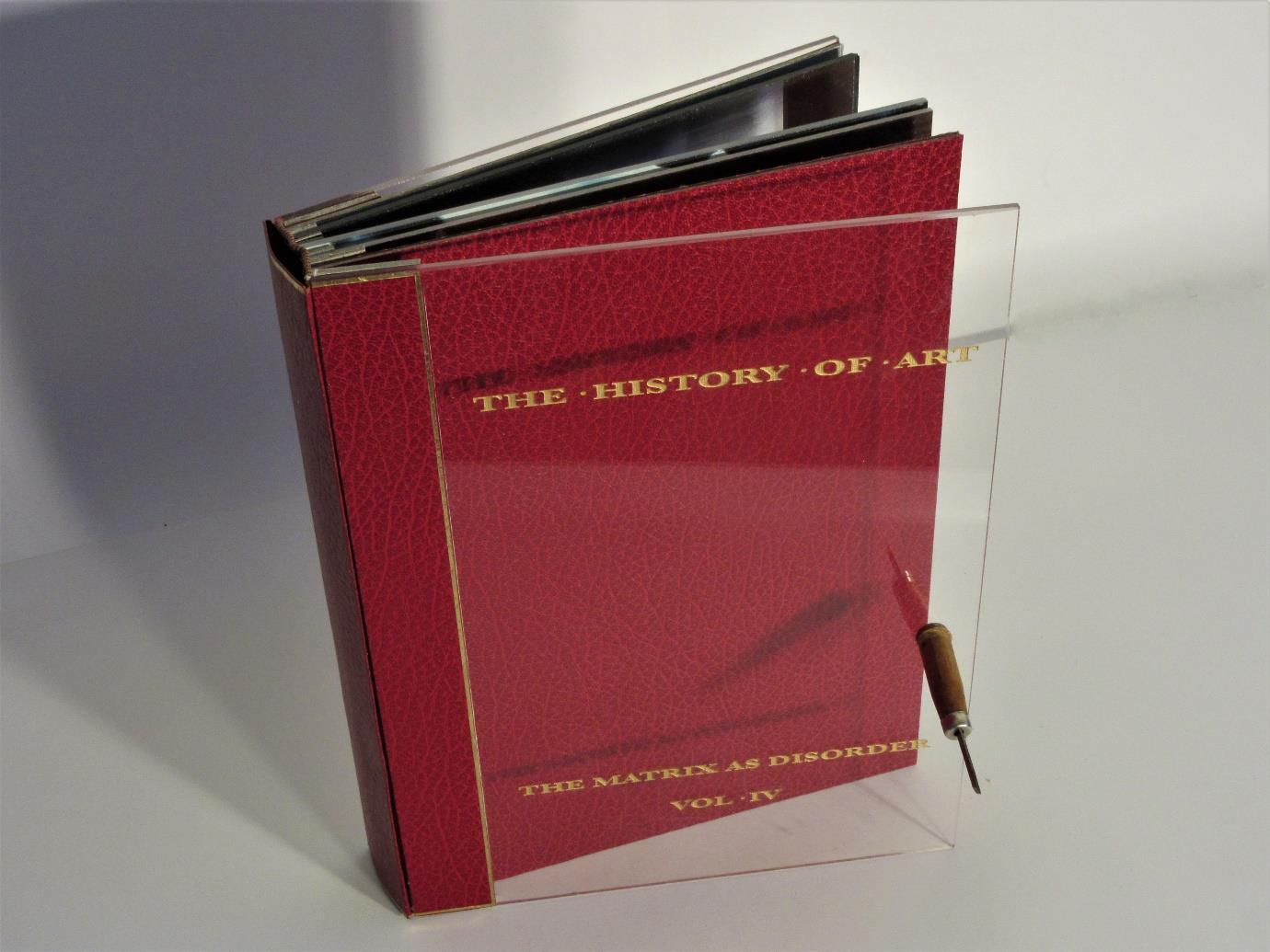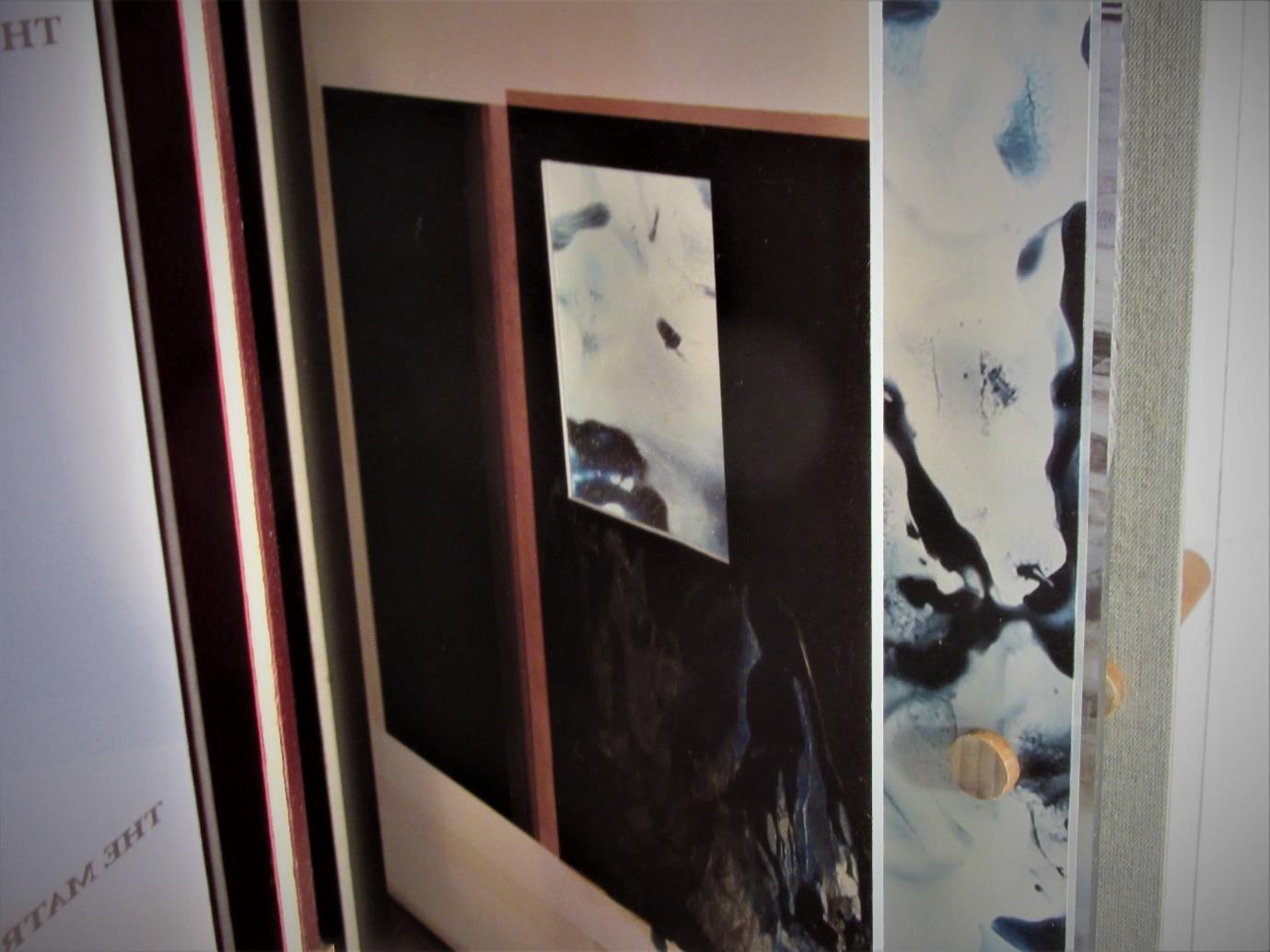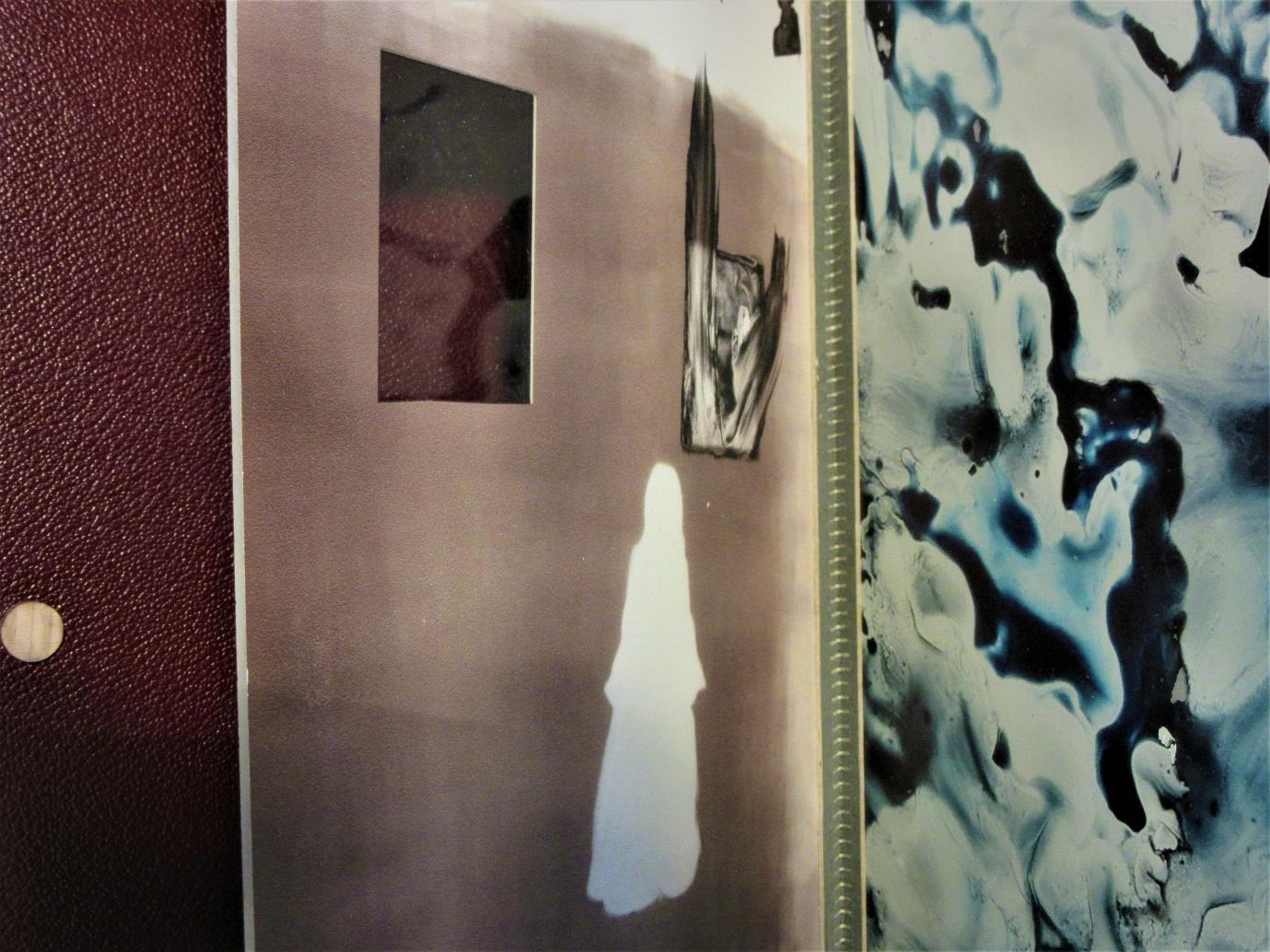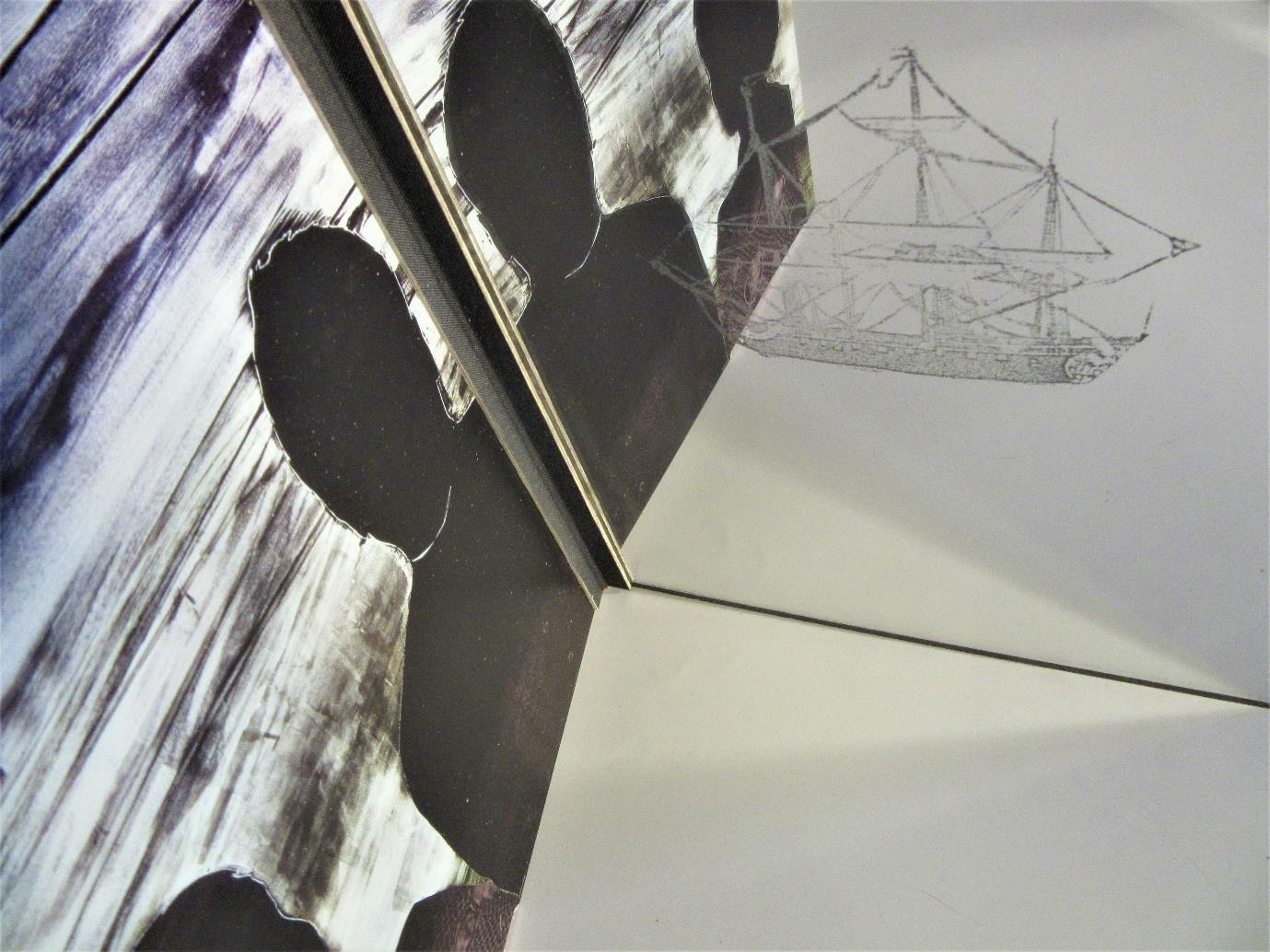The History of Art Volumes I IV
Made in collaboration with bookbinder Helene van Aswegen, these multi media ‘books’ were made from Perspex, mirror, faux leather, cloth, engraving and found objects. They were exhibited as part of the Boundless Objects exhibition, curated by Helene van Aswegen, at The Toffee Gallery, 2018. https://issuu.com/thetoffeegallery/docs/catalogue boundlessobjects

This series constitutes one component of the exhibition, The Santiago Cross: Invisible Trade which in turn is one component of the ongoing To Be King Project a project which makes particular reference to the painting Las Meninas by Velásquez ( 1565) and the essay Las Meninas by Foucault (Translated into English in 1966).
The History of Art Volumes I IV mimics a Western narrative of the ‘History of Art’ The red faux leather cover with gold embossing evokes an authoritative tradition of a stable and linear narrative. Within these ‘books’ this tradition is challenged as the linear narrative of progression is destabilized the frame collapses and the ‘painting within a painting’ spills over disrupting the original image .Moreover the viewer’s complicity in ‘reading’ this history is evoked through the use of the mirror in which he/she catches glimpses of him/herself.
Historical Context
In Spain during the 16th and 17th century, artists did not have high social standing, painting being regarded as a manual trade, and paintings classified as ‘manufactured goods’ along with cloth and barrels ( goods that would have been transported on ships to the colonies).
In his essay, The Meaning of Las Meninas, Jonathan Brown argues that the major impetus behind this large scale work is the credibility of painting as worthy of nobility and correspondingly the conferral, on the painter, of nobility. (Brown 1978: p.109). Velásquez looking out at the viewer with his paintbrush mid stroke deliberately placed himself in the role of an ‘artist at work’.
Tools of the Trade
In the exhibition The Santiago Cross: Invisible Trade, art as a ‘trade’ is deliberately revealed in the images by revealing the ‘tools of my trade’. The process of production is revealed through the inclusion in the image of the ink, rollers, scissors, rags and turpentine. In addition in The History of Art Vol I IV, the actual tools pierce the ‘book’. These objects are comparable to Velásquez’s deliberate exposure of his palette and paintbrush. The polymer material onto which the images are printed extends this concept as it was the matrix onto which the original images were painted. The dialectical relationship between the actual (the tools) and the imaginary (the depicted image) extends the gaze
The Trade Ship
In each of the ‘books’ is an image of the ‘king and queen’ as they were enacted in the To Be King video projection. This image references the indistinct image of King Philip IV and his wife depicted in the mirror in the Las Meninas painting. In The History of Art Volumes I IV this image is literally mirrored in a mirror upon which a ship has been engraved. This ship is the slave ship La Rochelle Slave Ship Le Saphir, painted in 1741. The original painting depicts slaves and slavers, with God in the right hand corner, ambiguously blessing or urging the ship on The trade of materials and people which underpinned the imperial project and in which King Philip IV of Spain is implicated, is alluded to in this engraving which floats across the mirrored image. The ship that floats into the picture plane in these volumes appears ghostlike as it is printed against a black surface.
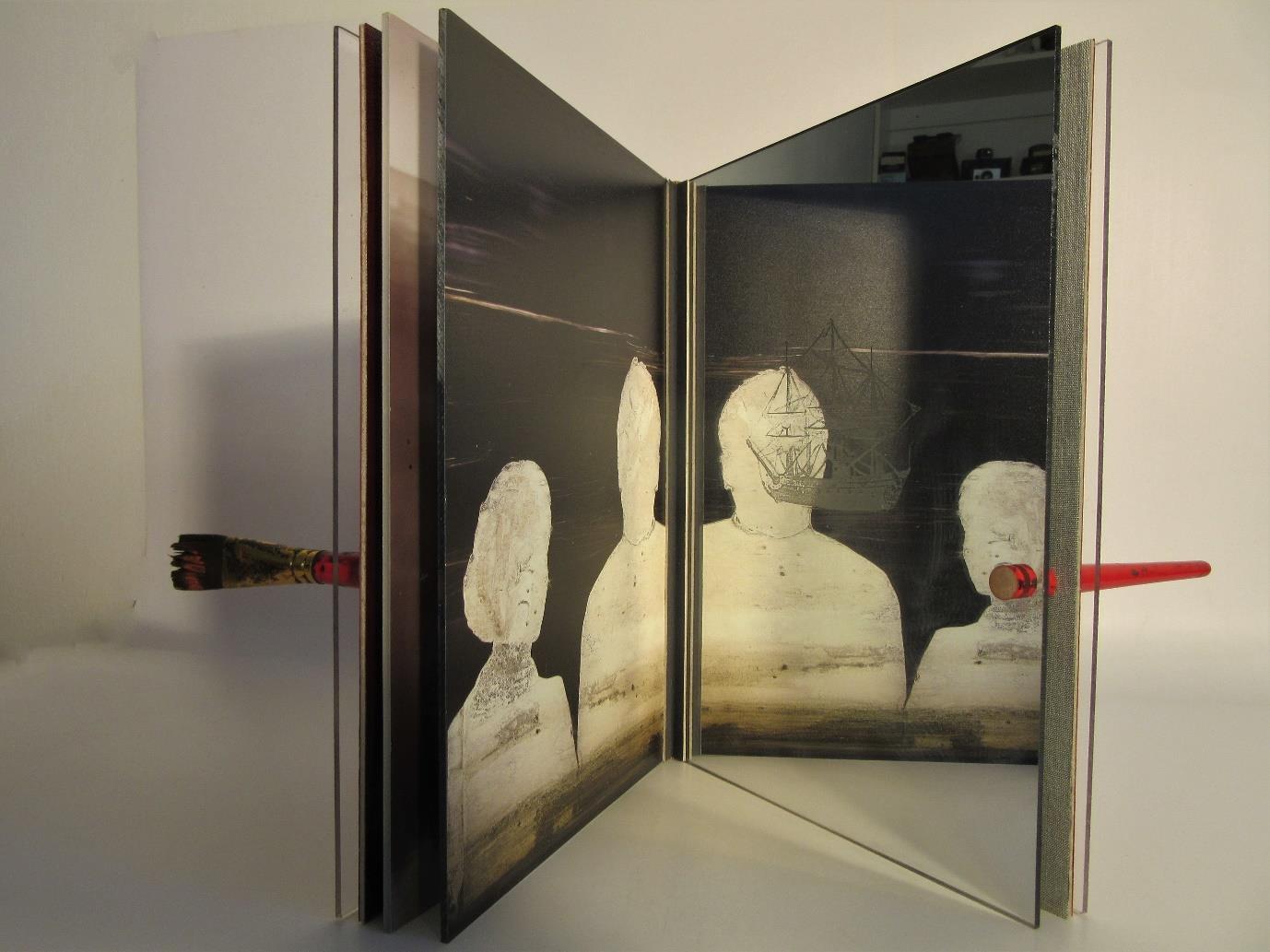 of the artist from behind his easel to deliberately reveal the labour of art and the fracture between the real and the illusion.
of the artist from behind his easel to deliberately reveal the labour of art and the fracture between the real and the illusion.
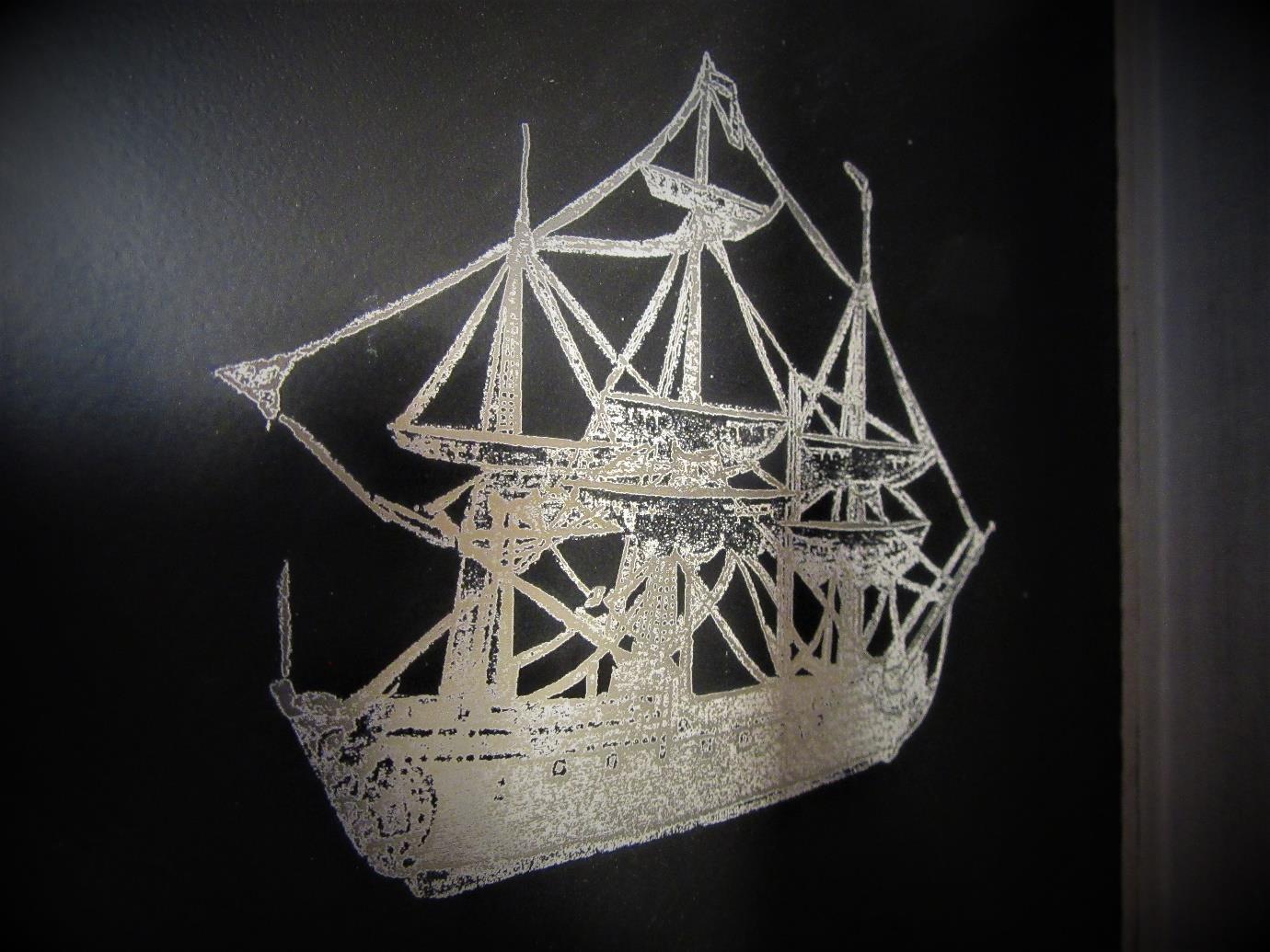
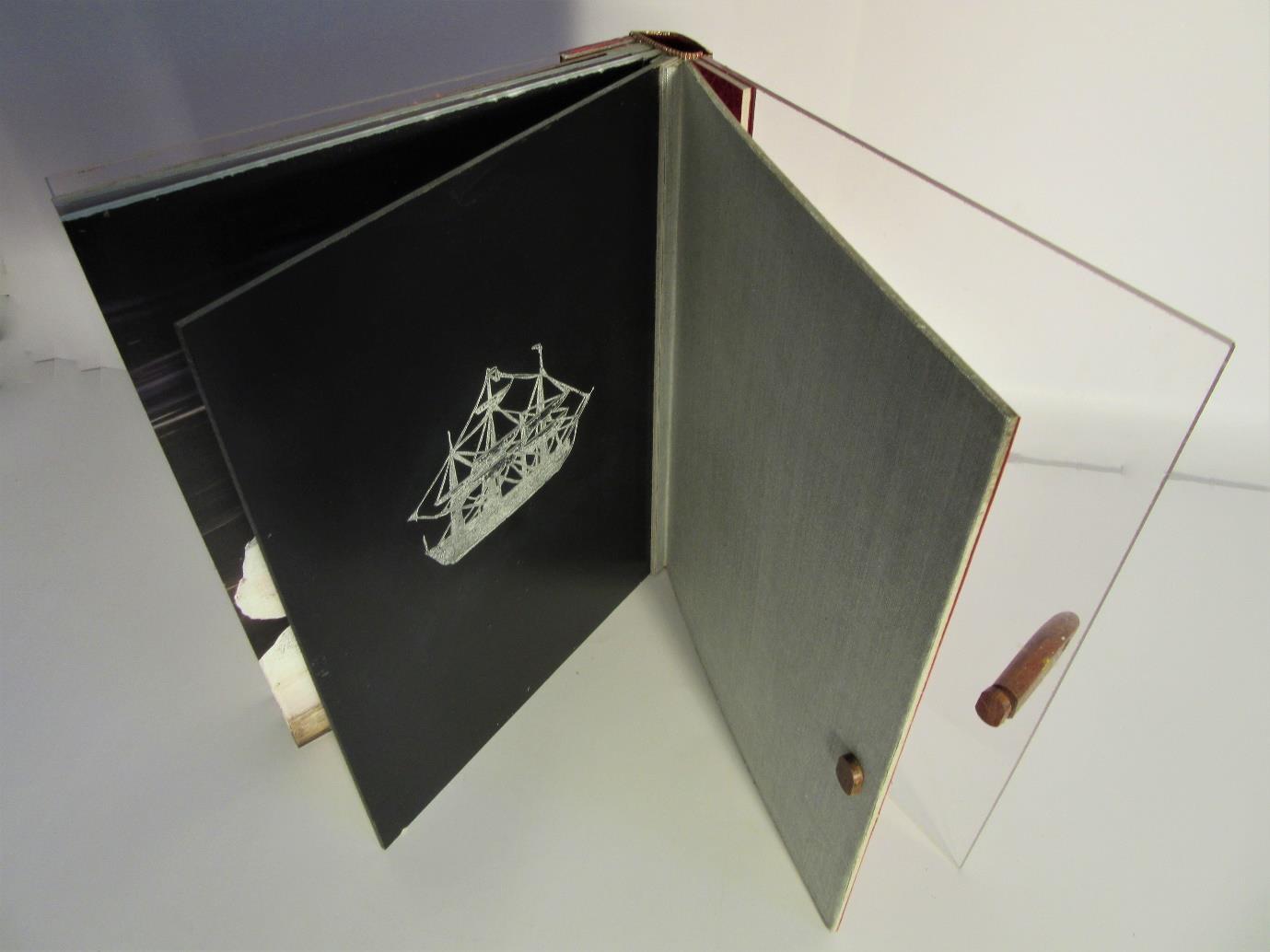
Vol I: The Window as World
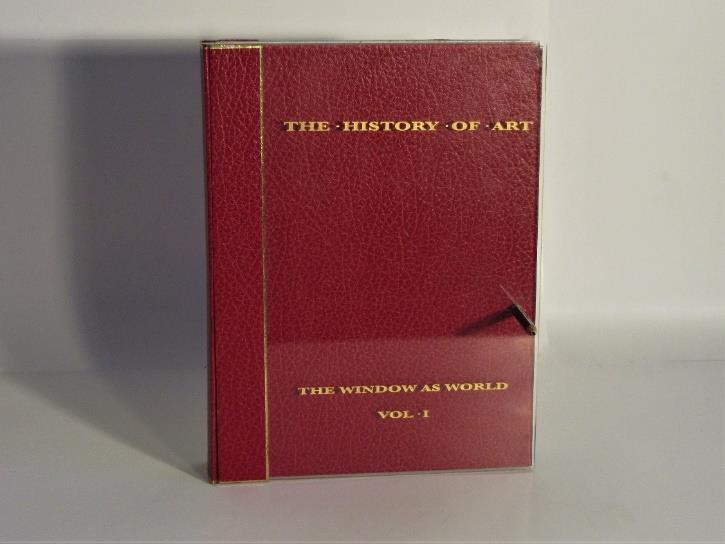
In his treatise on painting, the 15th century architect, sculptor, painter, and theorist Leon Battista Alberti described painting as the construction of an image that resembles a window. His simile of the window emphasized the illusionistic representation of a three dimensional object on a two dimensional surface, in effect denying the material surface of the canvas. In this configuration, the painting as a window becomes a transparent surface through which the viewer can glimpse an ordered, one point linear perspective of the world. A perspective that privileges a particular viewpoint.
In The History of Art Vol.1: The Window as World the framed ‘image’ is treated as ‘real’ window as the transparent property intrinsic to the polymer surface is utilized. In the foreground of the image is a photographic representation of a young girl enacting the role of the Princess Margherita of Spain She is depicted in a pose and dress reminiscent of the princess in the painting Las Meninas. Through the clear ‘window’ the viewer glimpses the blue sky printed on the following ‘page’.
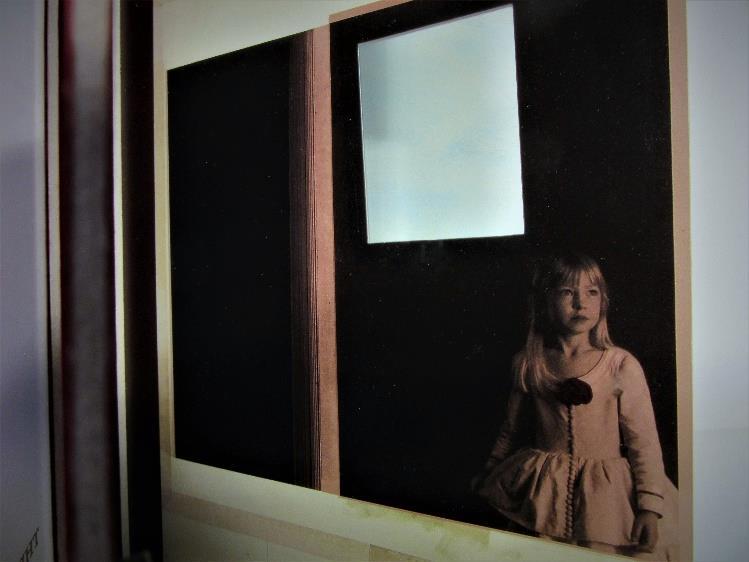

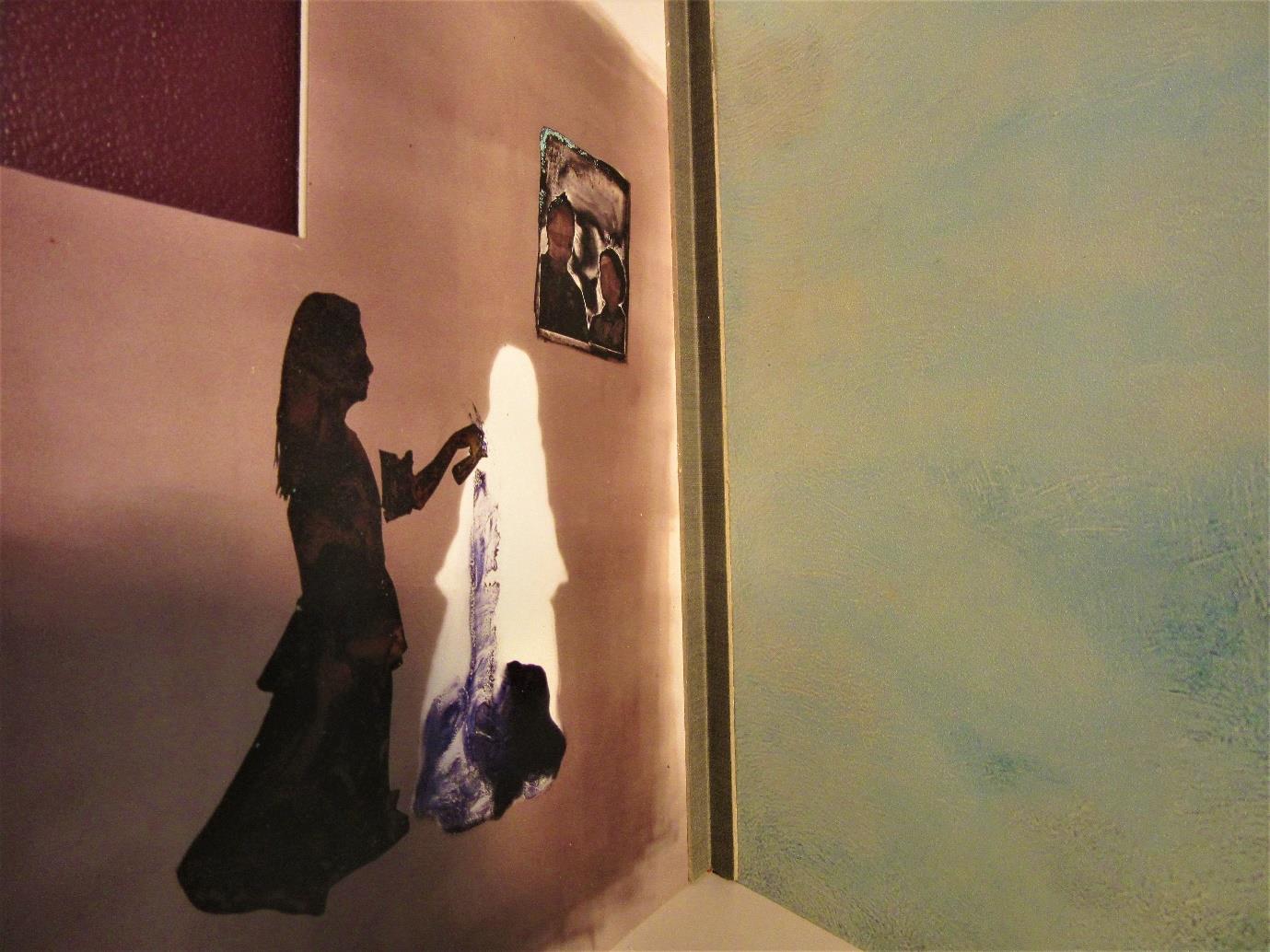
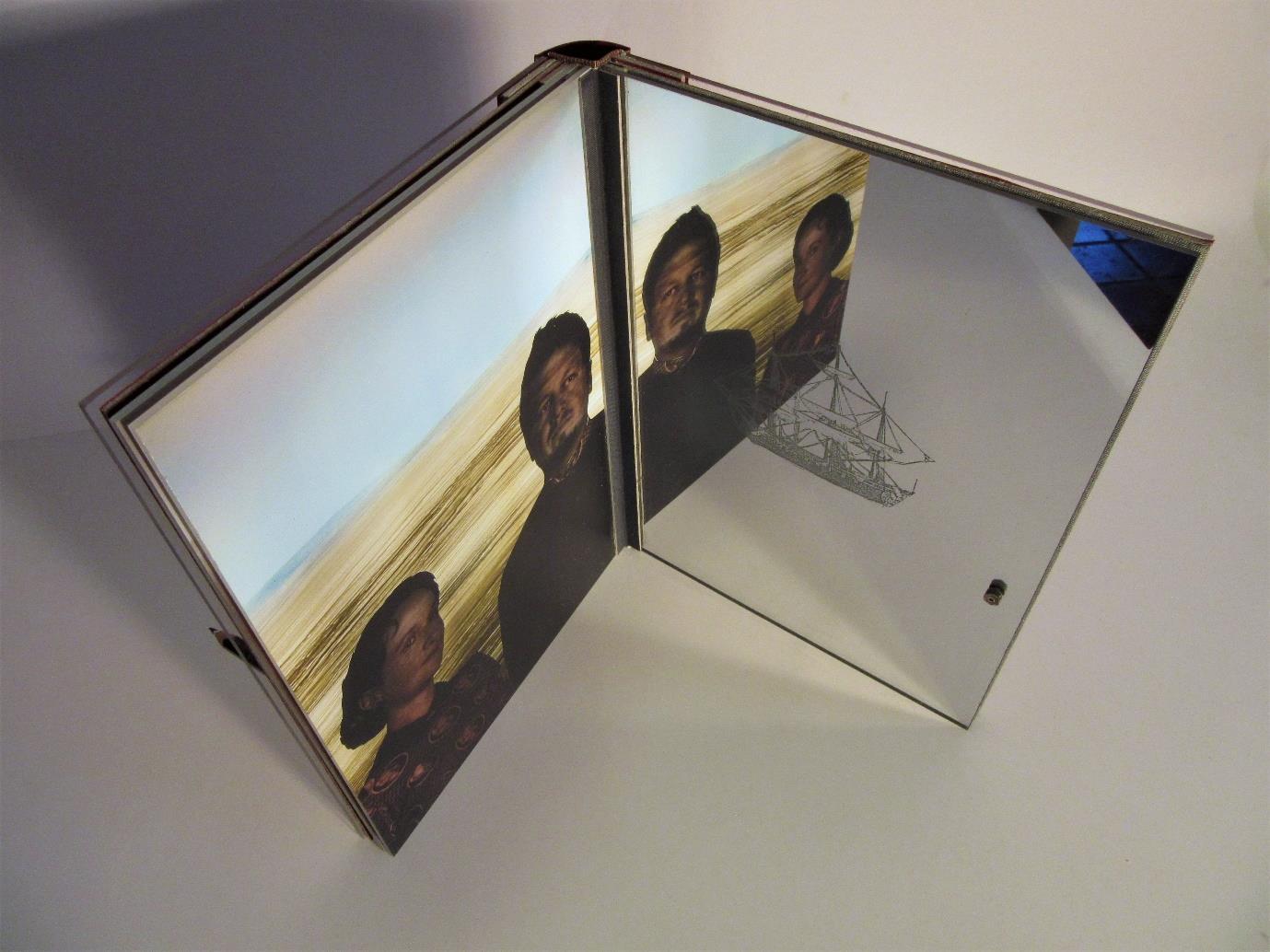
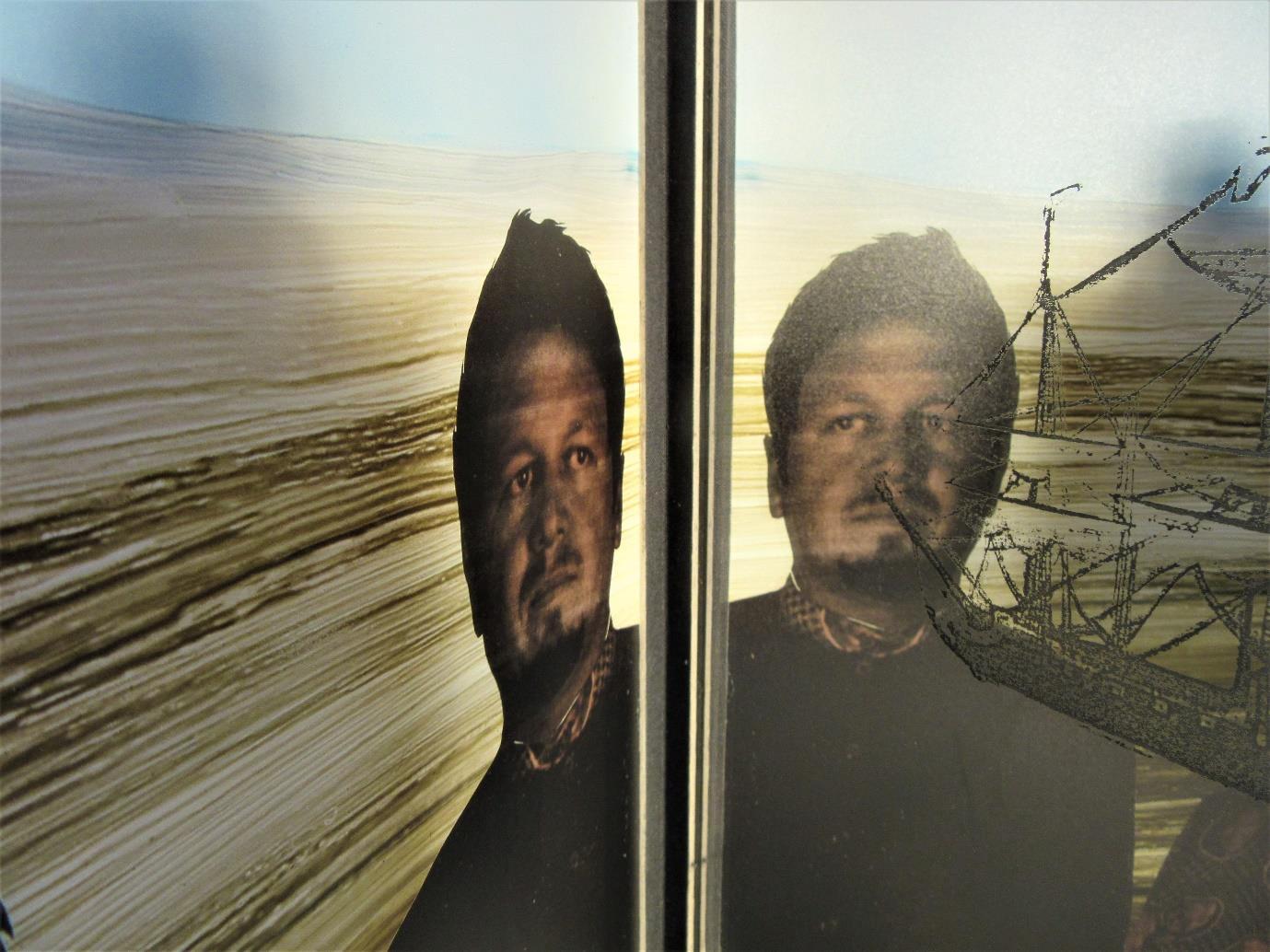
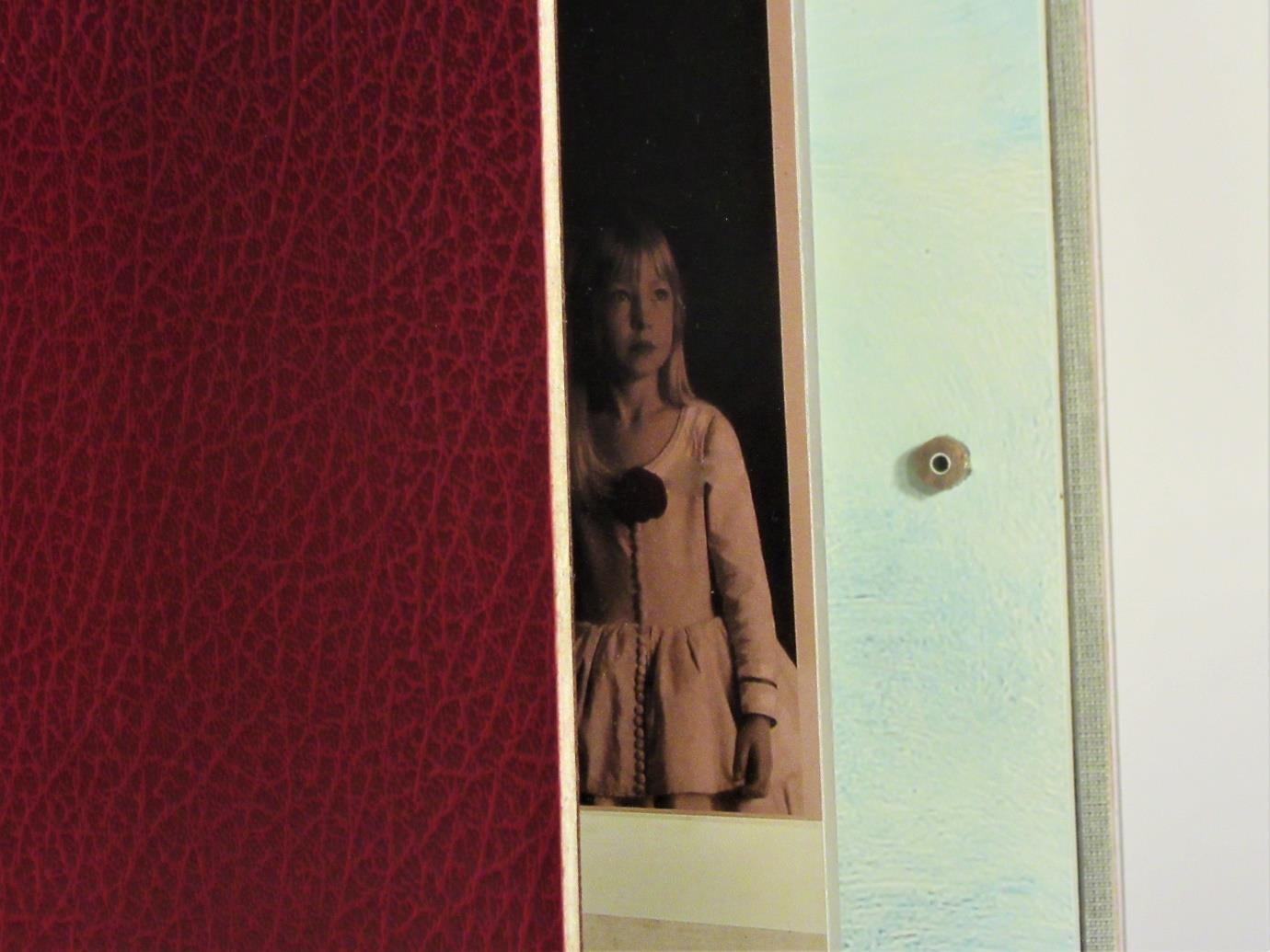

Vol II: The Mirror as Phase
During the Renaissance artists attempted to mirror ‘nature’ there was a belief in the notion of a universal truth and a transcendental ideal that art should attempt to reflect. This belief system could be considered a ‘phase’ in the narrative of western art.
The other phase I refer to here is the French philosopher Jacque Lacan’s mirror phase in which the infant, at around six months recognizes herself as the “I” in the mirror and irrevocably enters the realm of language associated with the father and society.
In The History of Art Vol II: The Mirror as Phase, multiple mirrors are referenced. There is also a play between ‘real’ mirrors, which reflect the viewer and the mirror depicted in the Las Meninas painting. In Vol. II the reflective surface multiplies as it references mirrors within mirrors.
Foucault observes of the mirror in the Las Meninas painting: That space where the king and his wife hold sway belongs equally well to the artist and to the spectator: and in the depths of the mirror there could also appear there ought to appear the anonymous face of the passer by and that of Velázquez. For the function of that reflection is to draw into the interior of the picture what is intimately foreign to it: the gaze which has organised it and the gaze for which it is displayed. But because they are present within the picture, to the right and to the left, the artist and the visitor cannot be given a place in the mirror, just as the king appears in the depths of the looking glass precisely because he does not belong to the picture (Foucault,15).
